Sacred Solitude: Inside the World of Greek Orthodox...
Keepers of stillness and prayer in...
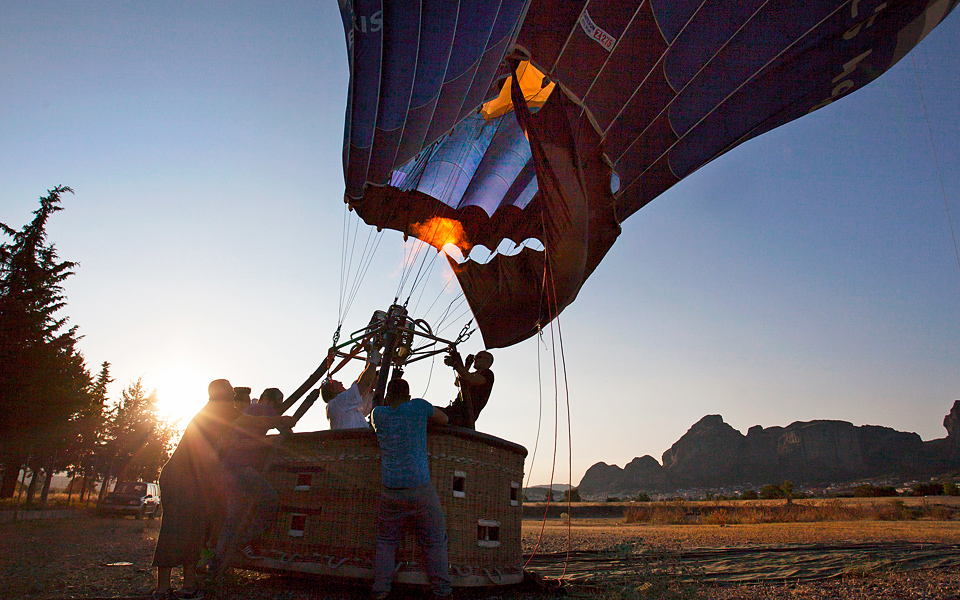
Soaring over the boulders of Meteora is a unique way to enjoy the place
© Vasilis Tsiolis
A flight by hot air balloon is a childhood dream for many of us. Besides, who hasn’t mentally traversed the African continent in five weeks by balloon, while reading the wondrous adventures in Jules Verne’s novel?
And sometimes dreams come true. We are in an open space, southwest of the town of Kalambaka in the region of Thessaly, central Greece. Looking to the north and east, the huge rocks of Meteora can be made out, standing majestically like timeless monuments between the mountains of Koziakas and Antichasia.
The first thing we learn is that the point of departure of the air balloon will be determined by the direction of the winds. The staff, with quick movements, unroll the cloth which is inflated with hot air; within minutes, it is converted into a giant balloon. The pilot is in place, and everyone boards the basket quickly. The buoyancy of the balloon is so gentle that we are in the air before we even realize it.
“Who hasn’t mentally traversed the African continent in five weeks by balloon, while reading the wondrous adventures in Jules Verne’s novel?”
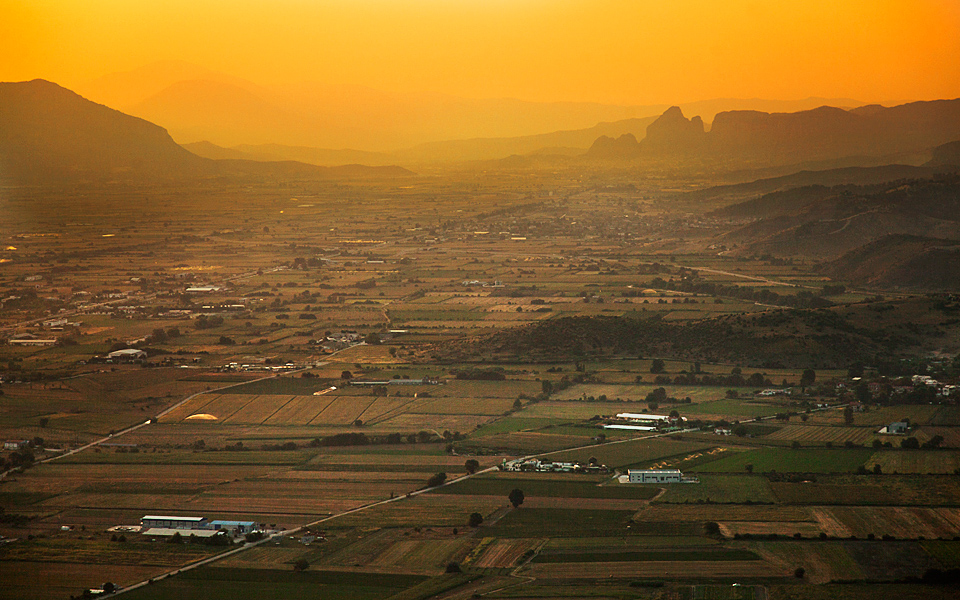
Meteora at sunset
© Vasilis Tsiolis
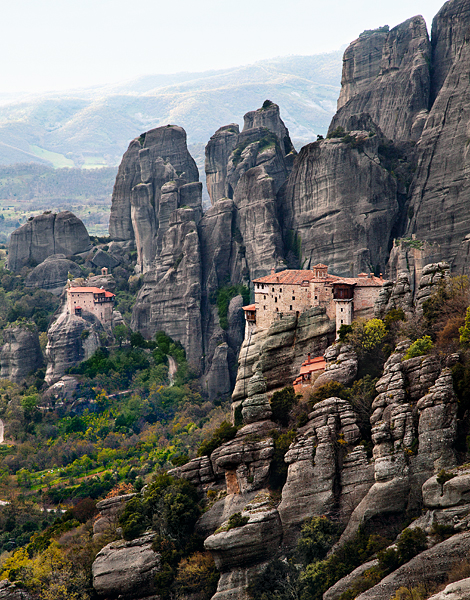
One of the six monasteries still in operation
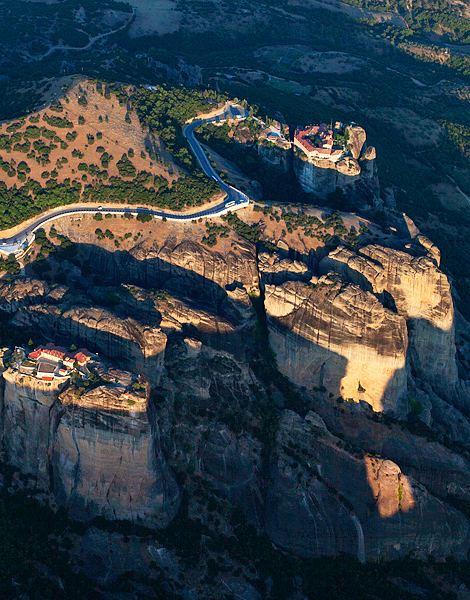
Meteora's beautiful rock formations are a magnet for visitors each year
From up high, the houses resemble matchboxes, and the earth is like a painting. Nature is the perfect creator, which is easily realized by the wonderful spectacle that began to unfold before our eyes.
On our left, coming all the way from the depths of the Pindos mountain range, emerges the river Pinios, snaking its way through the rugged landscape. Ahead lie the ancient and magnificent rocks of Meteora, proudly presiding over everything else, dotted with several monasteries on their peaks. The setting looks like a huge stone city – Meteora is made up of more than 800 rocks – and it is not only one of the most admired natural formations in the country, but also one of the greatest centers for Orthodox Christian pilgrimage.
Meteora is, after Mount Athos, the largest continuously inhabited monastic center in Greece. Around 1100 AD, the first hermits climbed the hitherto inaccessible peaks of the rocks and established a monastic outpost. As historical evidence suggests, twenty-four monasteries were built during the 15th century, adding to the earlier settlements. Today, only six monasteries are in operation, drawing several pilgrims each year, especially during Easter. Taking advantage of the privilege of my origin, I have visited Meteora several times. But the unique spectacle that is offered to you, the terrain, the huge rocks and the monasteries hanging precariously from them, is something that you can only experience from high above.
“Meteora is, after Mount Athos, the largest continuously inhabited monastic center in Greece.”
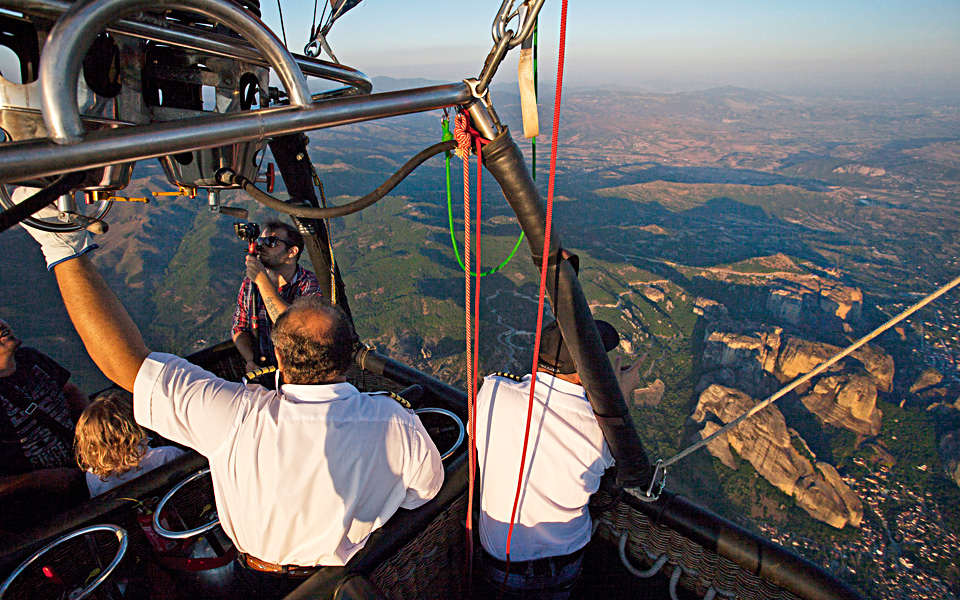
The hot air balloon rises gently over the plains
© Vasilis Tsiolis
Drifting north, driven by the light winds blowing in the area, we slowly leave the plains of Thessaly and the giant rocks of Meteora behind us, which are now hued with the early colors of the sunset. The easy flight of the balloon, the freshness of the atmosphere at 4,000 feet, the green forest stretching out from the ground below, and the purple and golden colors generated by the setting sun offered the ultimate sensation of mental and spiritual calm; a feeling of vastness and of purity and peace takes over.
The one hour or so that the flight lasts passes very quickly. As the sun disappears behind Pindos’s peaks, the balloon gently sets us down on the ground. People who happened at that time to be collecting clovers in the fields cheered and approached to greet us. Images, one feels, coming straight out a fairy tale.
A flight on a hot air balloon is by itself a magical experience; when combined with the unparalleled views over Meteora, it is simply staggering. The vistas alternate, one after another, offering unparalleled depth, clarity, and calmness; they will remain forever etched in your mind.
“A flight on a hot air balloon is by itself a magical experience; when combined with the unparalleled views over Meteora, it is simply staggering”
Meteora lies 350 km north of Athens. The journey takes around four hours by car. Alternatively, Kalambaka, the city closest to Meteora, can be reached by train from Athens Railway Station. A return ticket costs around €30. Tickets can be booked online via www.trainose.gr.
Hot air balloon flights over Meteora can be booked via Meteora Flights and start at €180 per person for adults and €100 per child.
Keepers of stillness and prayer in...
From Santorini sunsets to ancient ruins,...
Discover five mountain destinations where crisp...
From a mysterious Minoan structure to...